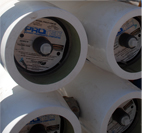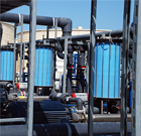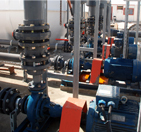|
|
The selection of the right pre-treatment is critical to the performance and longevity of every brackish water reverse osmosis (BWRO) plant.
    |
Overview
A successful pre-treatment package for brackish water reverse osmosis (BWRO) desalination is designed to mitigate the risks of membrane fouling, and to deliver capacity designed production and long-term reliability in the operation of the BWRO plant.
Designing the Right Pre-Treatment System
Designing the requisite pre-treatment system that eliminates any risks and at the same time deliver a solution that is reliable in performance, and cost-competitive in operation is crucial for the entire BWRO plant design.
These risks include:
- the amount of suspended solids and silt in the brackish water feed,
- the concentrations of mineral scaling species and also the presence of insoluble metal hydroxide forming species,
- natural organic species that foul the membranes,
- microbial species including and associated organic compounds that can cause bio-film formation on the membranes, and
- colloidal materials that concentrate and form barriers on the membrane surface.
The identification of an optimum location for the brackish water intake and type of brackish water intake system will minimise the load of silt and fine matter that enters the BWRO plant. All BWRO systems will however, include a pre-filtration stage to remove fine matter, silt and microbial matter.
High turbidity solutions may require the use of a sedimentation or coagulation plant together with fine media filtration and single-micron cartridge filtration, or a sedimentation or coagulation plant in combination with a membrane pre-treatment plant, whereas lower turbidity feeds may use multiple stage filters or a membrane filtration pre-treatment process only.
In every BWRO project, Septech leverages its successful track record of over 18 years to deliver process design, installation and operation of domestic, commercial and mega project plants. |
|

